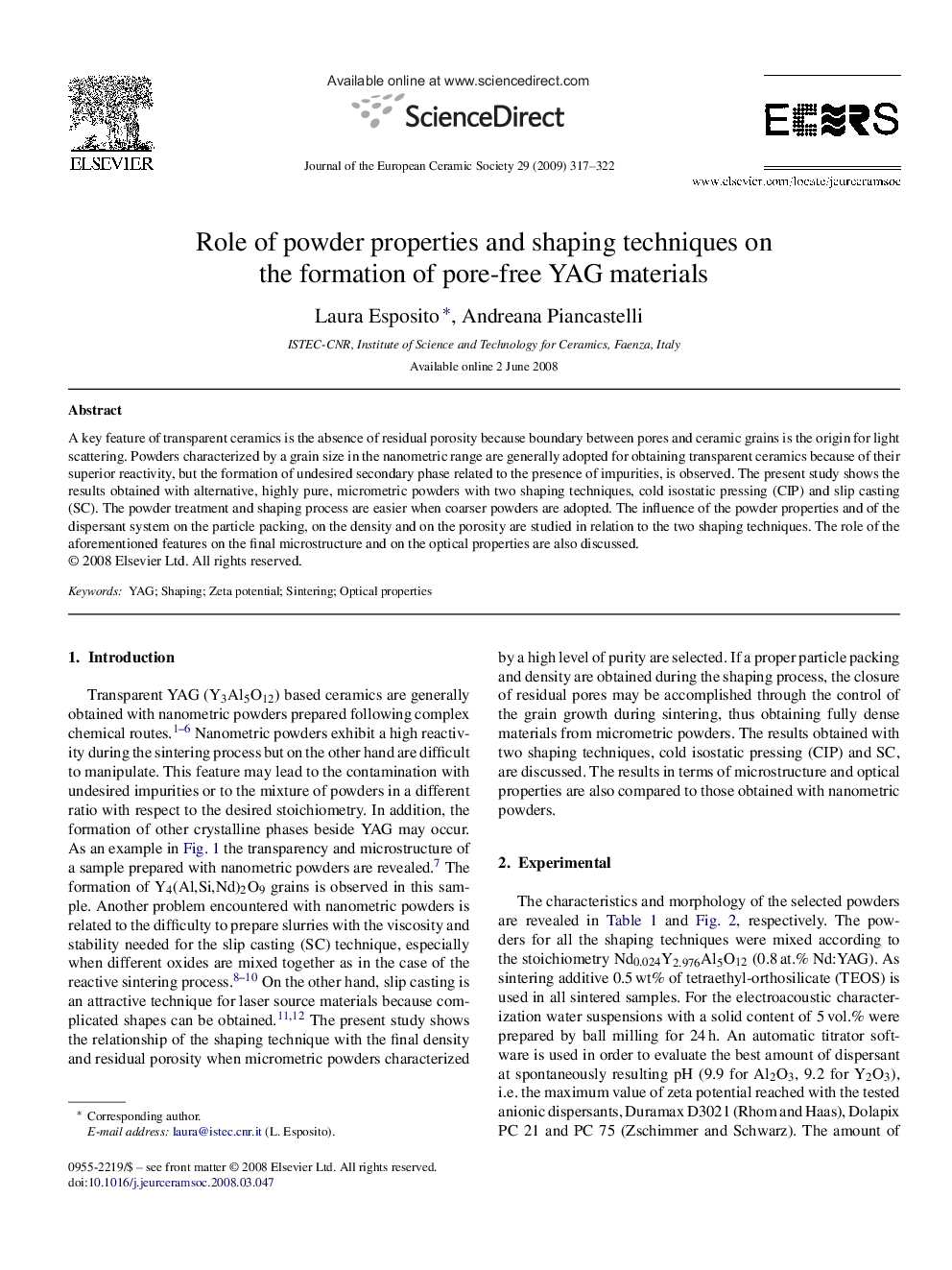| Article ID | Journal | Published Year | Pages | File Type |
|---|---|---|---|---|
| 1477095 | Journal of the European Ceramic Society | 2009 | 6 Pages |
A key feature of transparent ceramics is the absence of residual porosity because boundary between pores and ceramic grains is the origin for light scattering. Powders characterized by a grain size in the nanometric range are generally adopted for obtaining transparent ceramics because of their superior reactivity, but the formation of undesired secondary phase related to the presence of impurities, is observed. The present study shows the results obtained with alternative, highly pure, micrometric powders with two shaping techniques, cold isostatic pressing (CIP) and slip casting (SC). The powder treatment and shaping process are easier when coarser powders are adopted. The influence of the powder properties and of the dispersant system on the particle packing, on the density and on the porosity are studied in relation to the two shaping techniques. The role of the aforementioned features on the final microstructure and on the optical properties are also discussed.
